1
HOME > Tips & Advice >
HOW SHOULD A BLAZER FIT?
Written by Ivan Yaskey in Tips & Advice on the 7th August 2023
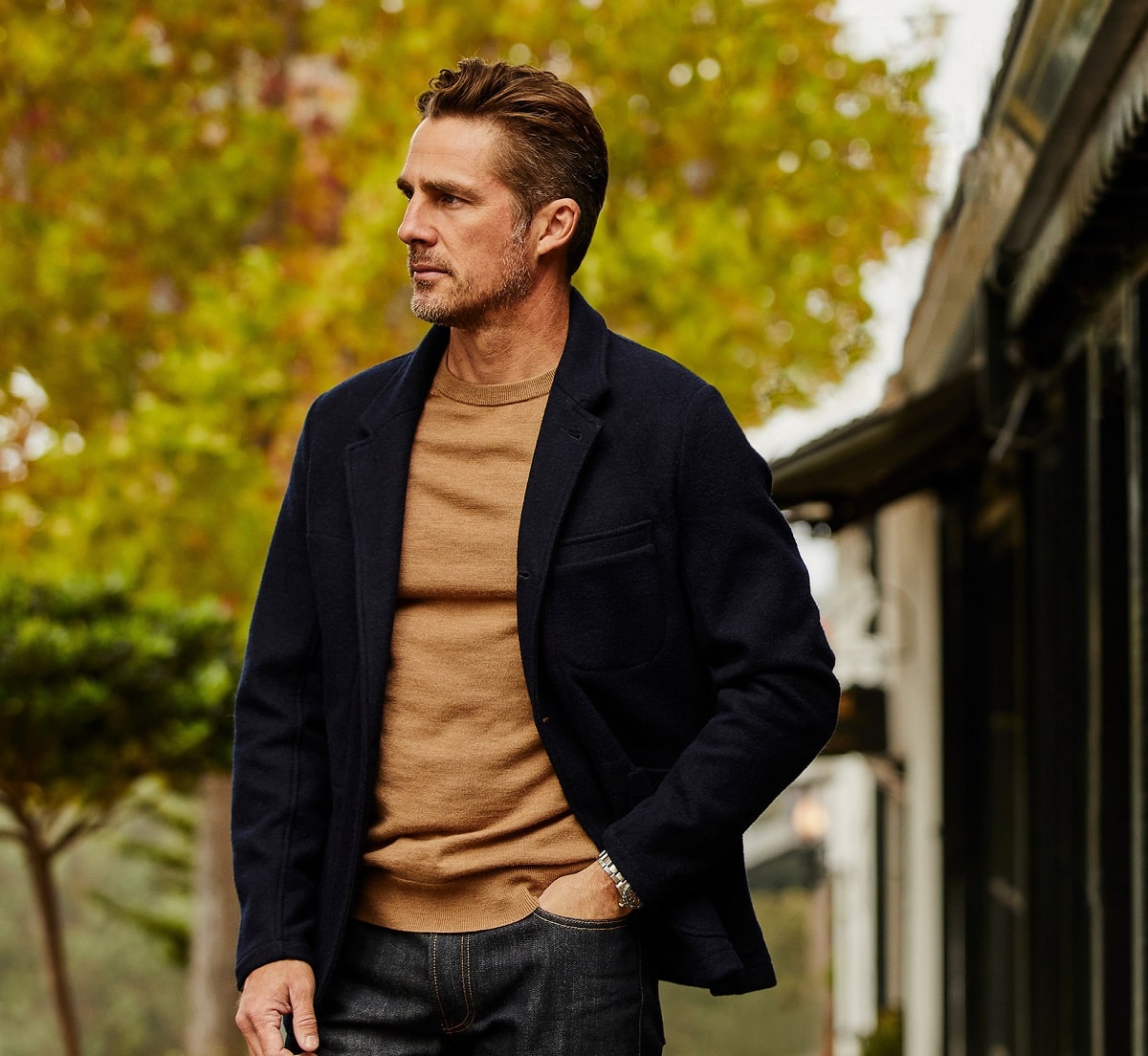
Too tight around the shoulders or straining with an X-formation over the middle, an ill-fitting blazer means you have to suck in – or fake it by keeping both buttons open. In the other direction, something too wide and long paints you as a Talking Heads fan, makes you look like you’re playing dress up with a grown man’s clothes, or shows that you don’t really understand how a garment falls on your frame. While blazers aimed at streetwear-leaning consumers now feature more space around the waist and shoulders, they’re an anomaly that wears a trendy sheen and acknowledges its lack of practicality. Slim – or at least regular-fitting – remains in for this smart-casual to dressier garment, but even that can feel like style roulette unless you head to a tailor or get something made-to-measure. Whether you’re shopping off the rack or getting more involved, understand how a blazer should fit:
General Characteristics
For the most part, the casual style enthusiast groups blazers, suit jackets, and sports coats under the same umbrella. After all, all feature a buttoned front, defined shoulders, straight sides that hit at the hips, and oftentimes a vented back. While fit doesn’t see significant variation, all three garments fulfill separate roles. The suit jacket assumes a formal stance, whether worn with matching trousers or broken up as separates. The blazer is less formal – slightly more spacious, not designed as part of a set, and intended to be worn in semi-formal, cocktail, and smart-casual settings. The sports coat, meanwhile, is another name for an unstructured blazer – a slightly looser cut garment with softer, not always padded shoulders that might just feature a button in front. In fact, the garment’s so casual that you might wear it open most of the time, rather than adhere to the top-button rule. In addition to these distinctions, blazers and suit jackets continue to feature sizing in numbers (sports coats, meanwhile, frequently use small, medium, and large sizes). Here, the number on the label reflects your chest size if measured front to back. An “R” indicates a regular length, and an “L” is added for a longer fit.
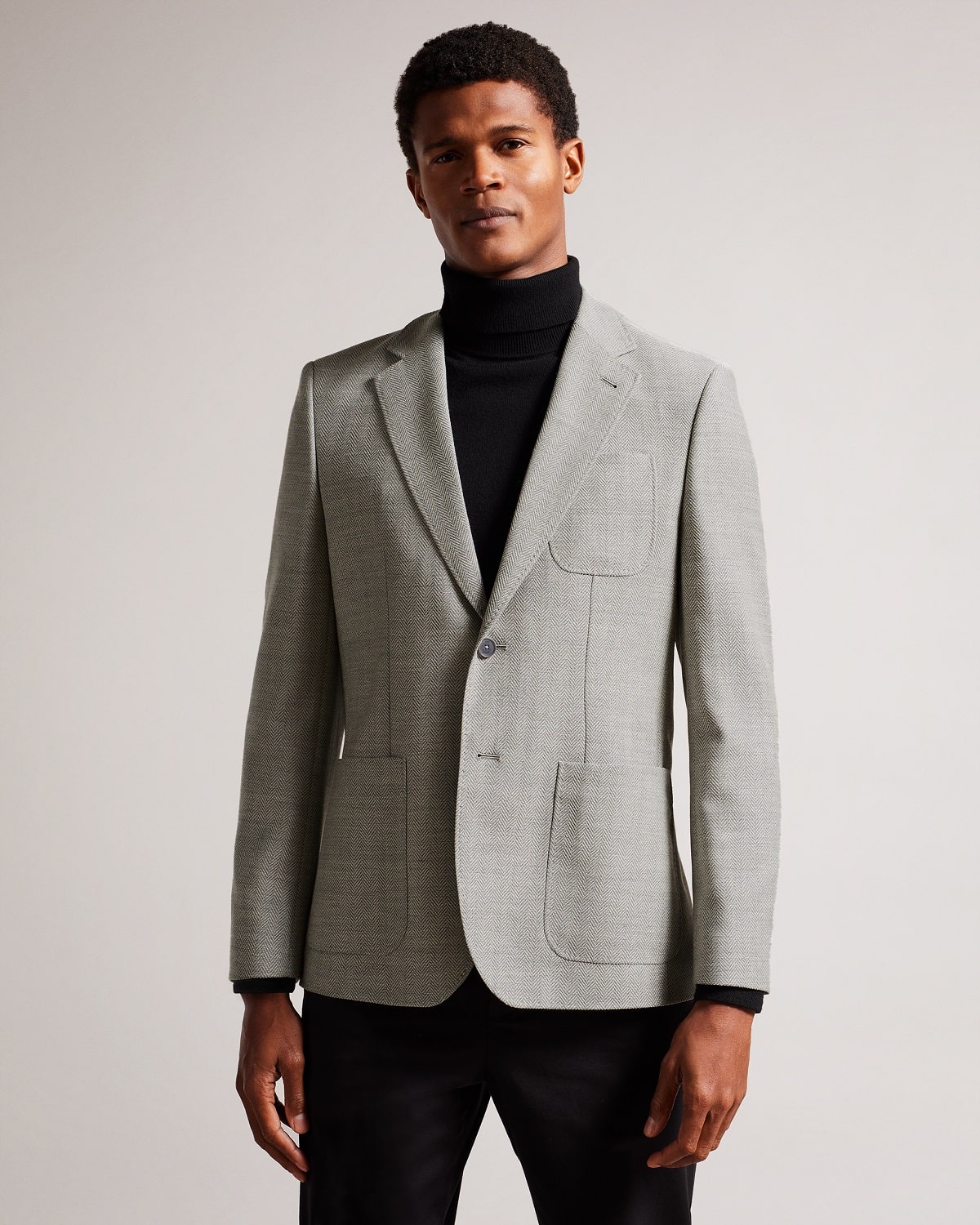
Length
On this last note, understand which type of size you should be wearing. Not to be confused with tall sizing, “R” blazers suit individuals who stand at 5 ft., 9 in., and an “L” accommodates someone taller. Anything marked “tall” tends to be crafted for someone above 6 ft., 2 in. Beyond these distinctions, the hem of a blazer should fall just past your hips, hit above your groin, and cover your seat. Anything shorter looks casual and kitschy – often with a cropped ‘80s vibe – and anything longer envelopes and obscures your torso. Of all aspects, length has the most flexibility. All a tailor needs to do is hem it an inch or two to help you get a more precise fit.
Sleeves
Many debate about where the cuff on a blazer should fall. Some claim that an inch behind the wrist is the best spot, as this shows part of your shirt. Others say it should cover the wrist completely, falling to the top of your hand. Wherever you stand, the ideal sleeve length highlights part of your shirt’s cuffs – about half an inch, possibly with at least one cufflink visible – and doesn’t cover it completely. Too short, and obviously the ensemble won’t appear proportional. In terms of alterations, sleeves fall in line with the length: A tailor can take off a couple of inches without upsetting its balance but can’t add more material to increase the length. In addition, while you shouldn’t see material bagging or ballooning around your arms, you may require a wider sleeve if your upper arms feel constricted.
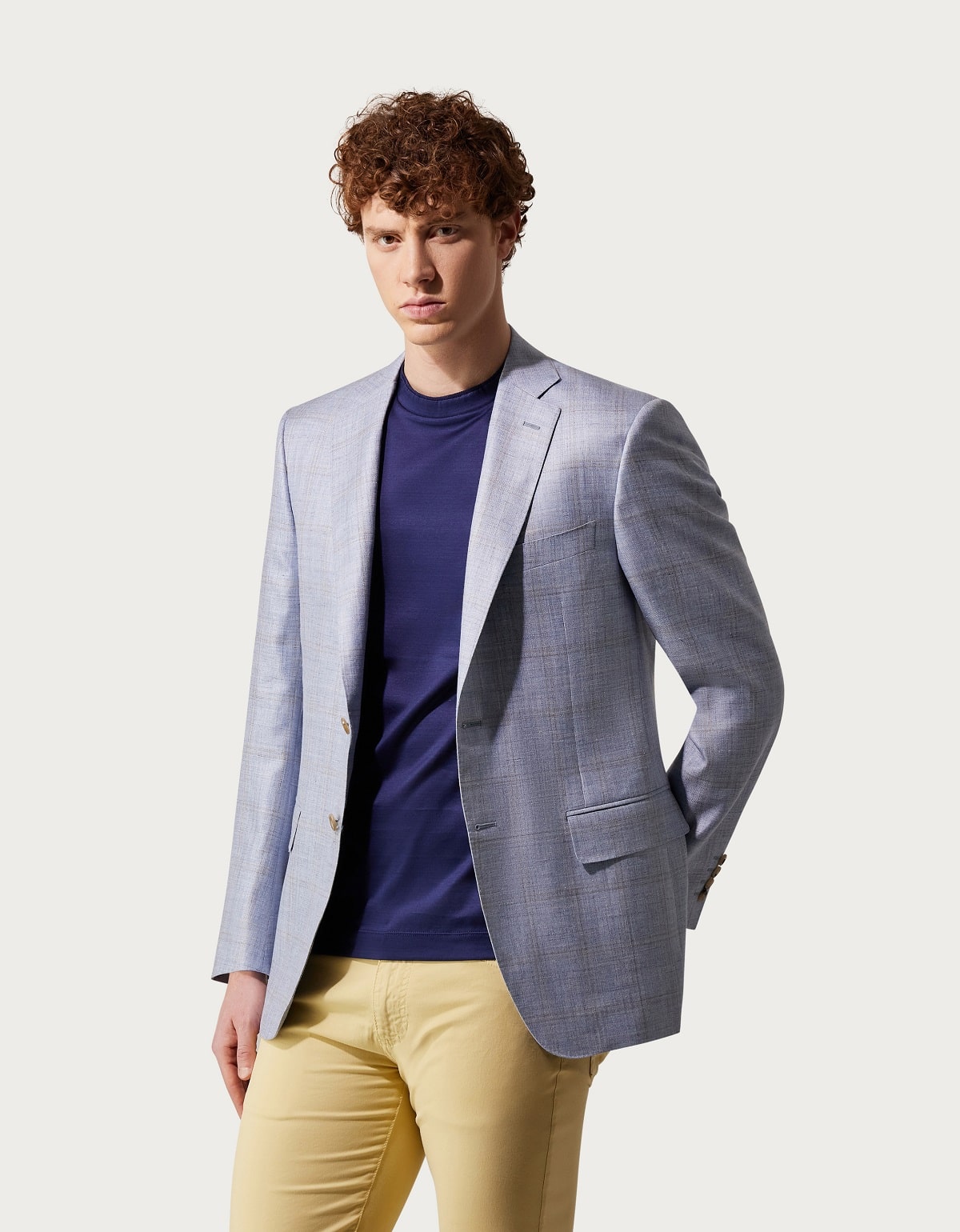
Armholes
Related to this last point, the armholes should sit higher on the jacket, or wherever your shoulders meet your arms. Avoid a droopy, dolman-sleeve-like fit, where you see the material moving around your shoulder and upper arm area. At the same time, the armhole’s lower end shouldn’t cut into or pinch your armpits. This becomes a fast ticket to hotspots and irritation. Even a slim-cut jacket needs to let your arms and shoulders breathe and move somewhat naturally. As far as movement is concerned, look for something that lets you reach your hands and arms above without restrictiveness.
Shoulders
No matter how they’re padded, the shoulders on a blazer ideally cut a smooth yet still angular line with your sleeve. You should notice a slight curve – not soft like a shirt or even sports coat, but also without wrinkles, bumps, and defined creases. A bit of padding helps, delivering definition and enhancing the jacket’s form and boldness. Too much, on the other hand, gives off an ‘80s vibe or positions the blazer’s top edge too close to your ears, consuming your neck in the process. From a distance, precisely padded and positioned shoulders form a square that slopes down your arm without any extra edges or redundancies.
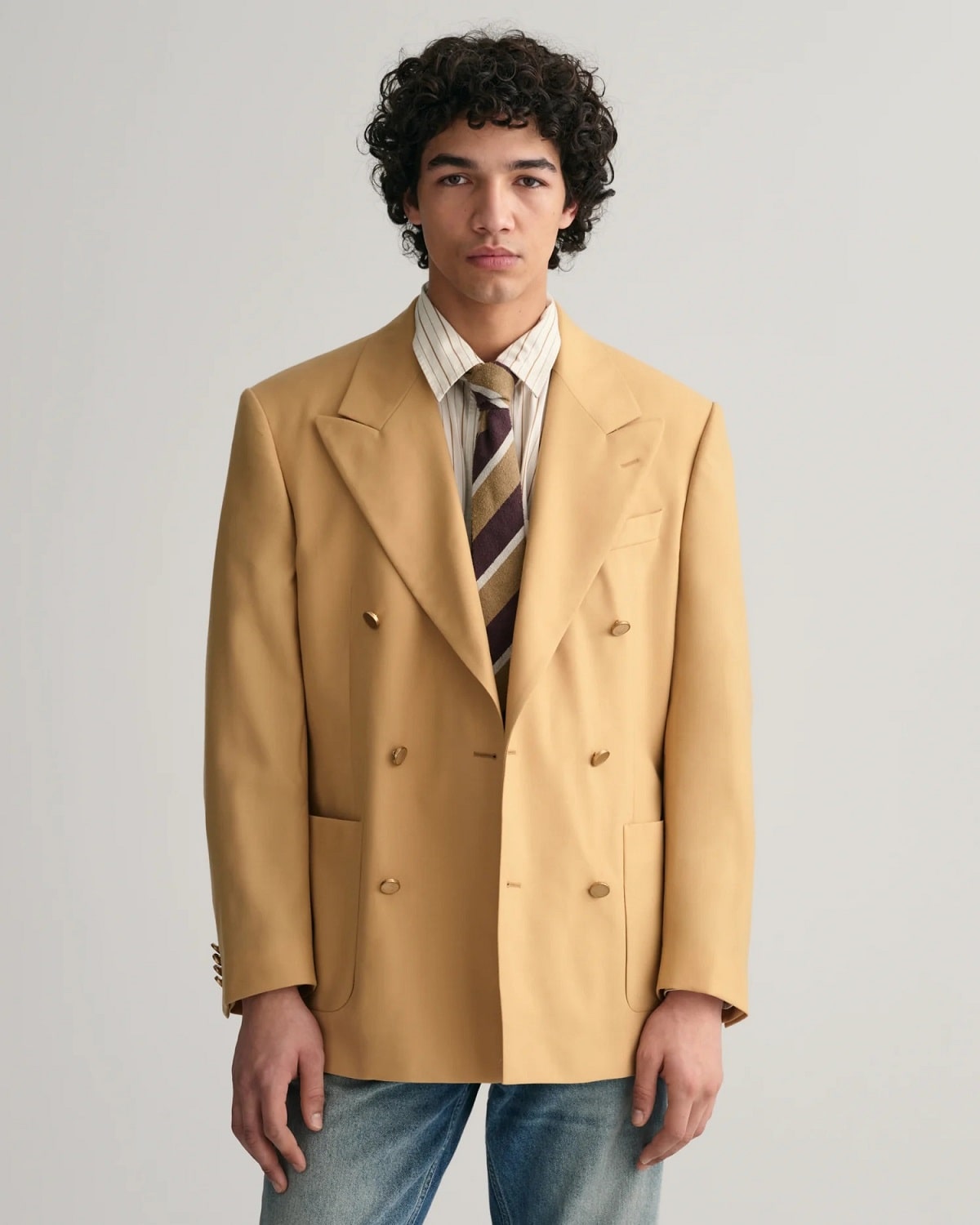
Lapels
You’ll notice a seam where the lapel hits and branches off from the collar. While widths vary with the decades and debates around peak versus double-notch formations continue, your blazer’s lapels should fall in a defined, somewhat smooth interior V-shape that doesn’t fan out. The outside angle faces, although doesn’t touch, your armpits, with the gorge – where the notch or peak sits – is situated higher, ideally right above your chest area, if not on your pectoral muscles. As a tip for proper lapel positioning, make sure you can reach directly into the blazer’s inner breast pocket without having to angle your hand or fumble with your fingers.
Collar
Seamlessly connecting with the lapels, the collar sits at the back of your blazer, designed to be tucked behind your shirt collar. A perfect fit here entails a shirt collar that remains on your neck without moving around, and a blazer collar that’s not too far behind and doesn’t gap or seem loose. Similarly, some of the shirt’s collar should peak from behind the blazer collar. Avoid a blazer collar that completely envelopes your shirt’s collar. In the case of more casual garments – think a camp collar shirt and a sports coat – these relationships vary slightly, sometimes with the shirt collar fitting over but not obscuring the blazer collar and sitting over part of the lapels.
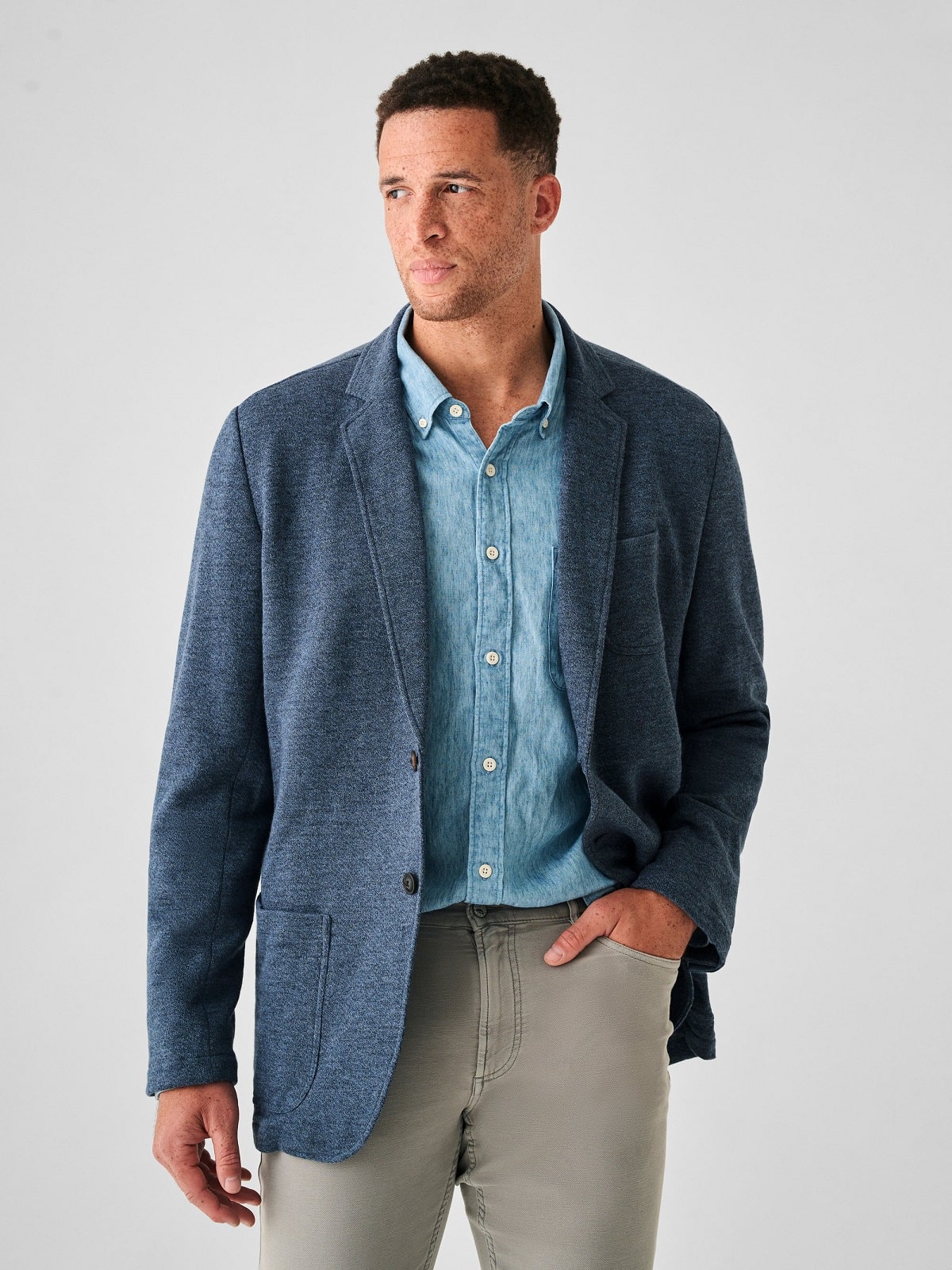
Chest and Body
With a paneled appearance, these two components work together to cover your front and back. The chest applies to the fabric extending from your shoulder area down past your hips. Here, you’ll spot the button holes, which should ideally sit right above your belly button. For double-breasted varieties, the six buttons and respective holes fall over and slightly above your abdominal region. The back covers the reverse area, often as paneled or a single piece of fabric leading to single or double vents that partially cover your seat. Due to blazers being a “midrange” garment regarding dress codes, more casual styles may have no vent or slit at all. Together, the chest and back form what’s essentially a tube for your torso once buttoned. Unlike for paper towels and hamster cages, however, a round look isn’t preferred – again, this appears too casual – and the seams along the sides should add a degree of definition and form a modest indent at the waist. As well, once you secure the top button, look for signs of straining – puckering or folds of fabric around your midsection, as well as close to your hips and shoulders from behind. Straining also causes the vents to gape or spread rather than fall flat down your back and the material to hug your chest. Just as with the lapels, you should be able to fit your hand comfortably, if not somewhat snugly, inside the chest area. As well, you should be able to wrap your arms around your torso – like you’re giving yourself a hug – and not tear the back or rip the armholes. However, the opposite is just as jarring: The material shouldn’t swing or let your torso move freely when buttoned. Should you notice this, ask a tailor to take in about an inch around the side seams.
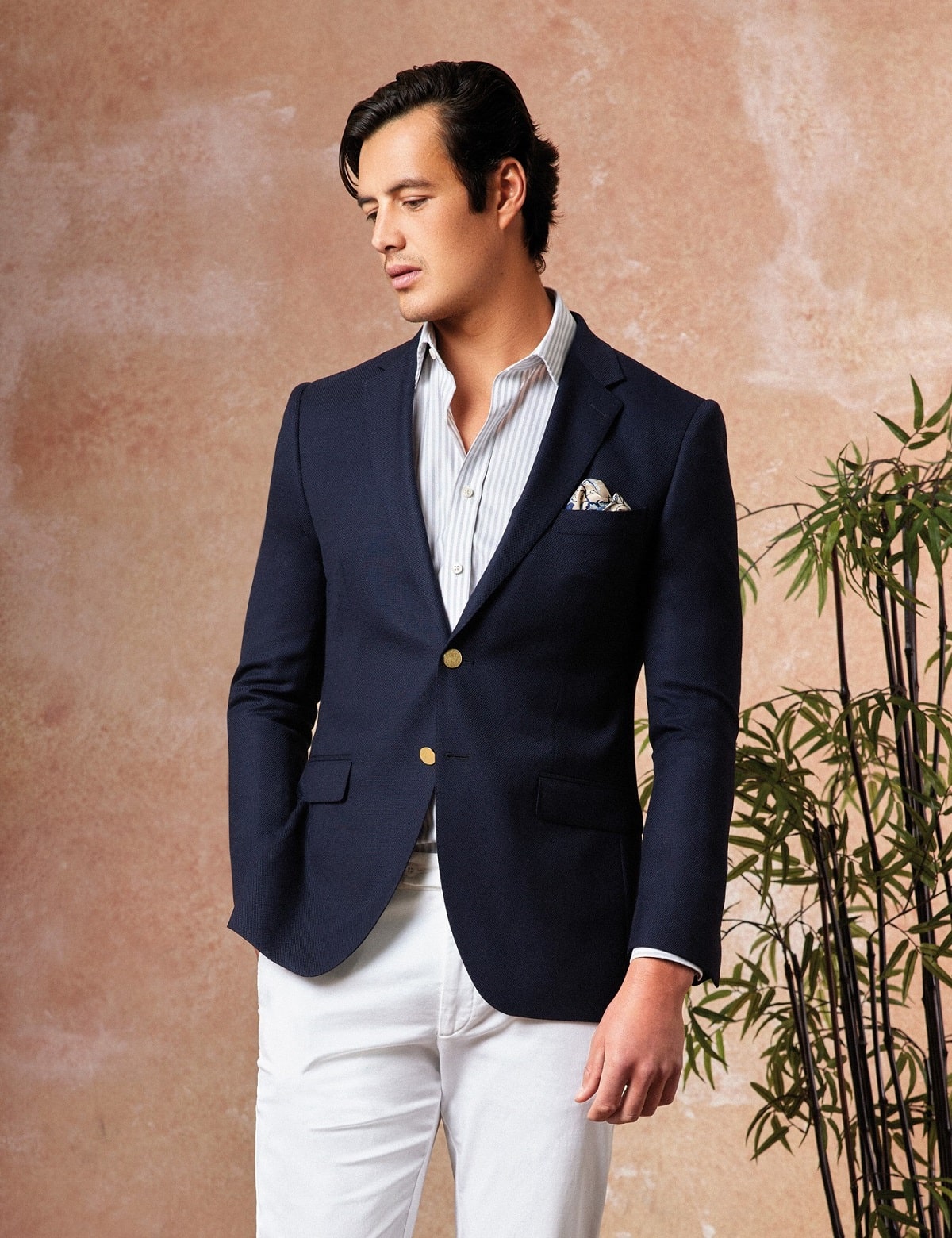

Trending
2
3
4
5
6
7
8
9
10










